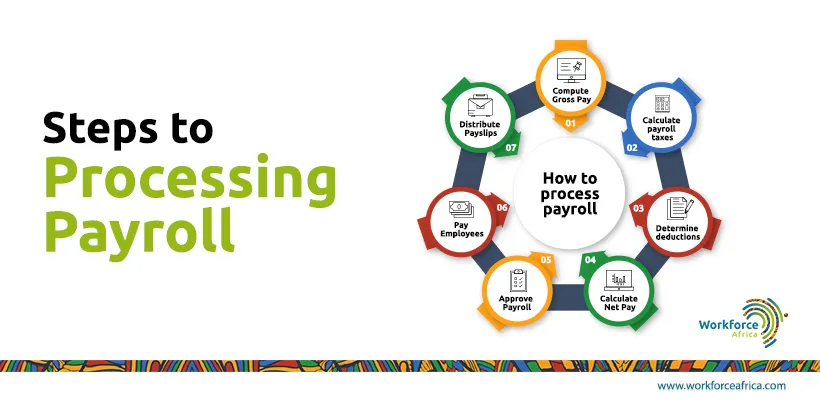Introduction to Payroll Management — Payroll plays a central and strategic role for winning organisations. This is because it reflects a business’s financial stability, operational efficiency, and reputation by its function.
It also directly impacts employee experience, and a good payroll management system saves organisations from compliance concerns that could result in hefty fines or even shutdowns.
Still, many organisations do not have a proper payroll system, making them liable for operational mistakes that could jeopardise business initiatives.
This article on the introduction to payroll management has been prepared to help you navigate the complexities of setting up and managing a functional payroll system in your organisation.
“You never want to be in a position where you can’t run payroll efficiently”
What is Payroll?
Payday is an important day in the life of your employees
Your team must be paid accurately and on time to keep them happy, drive creativity, business growth, and development.
Paying your team requires making the right deductions and allowances. But more importantly, payroll and related costs must be accounted for appropriately, statutory deductions remitted within agreed timelines, and the right documentation maintained to ease payroll reconciliation and auditing.
This process of paying all workers/employees is regarded as payroll.
“Payroll refers to the total emoluments paid to employees in consideration for services rendered to the employer.”
Thus, it is important to systemize your payroll for quality output from your team to avoid errors and other risks that could have a negative impact on your employee’s experience
A flexible Payroll Management process is crucial for your organisation, especially when dealing with remote and distributed teams.
The payroll management process is what a company does in administering and implementing payroll functions.
In this process, your business uses software applications or other alternatives to record employee details and manage salaries, track hours, manage leaves, bonuses, and deductions, among other payroll management functions.
Successful payroll management often relies on a codified payroll system document that contains a list of all employees who receive remuneration for services rendered to your company. In addition, it provides a summary of the entire monies paid to them within a specific time.
A Payroll System document codifies the following:
Your company’s remuneration strategy which may include bonuses, leaves, and deductions.
Detailed payslips and provides a detailed breakdown of salaries and wages.
With the information codified, the payroll document provides a solid foundation for payroll management because it helps your organization determine actual remuneration used for paying salaries and / or wages.
Simple Steps to Processing Payroll
Once Payroll foundations have been standardised, the next step will be to do payroll ultimately.
Here’s a simple step by step process to help you process payroll more efficiently

- Compute Gross Pay – After gathering the relevant employee data at the start of a payroll period, the first step is to compute the gross amount payable to the employee. Here, you calculate the total number of hours or days an employee works in a given pay period multiplied by their hourly/daily wage rate.
- Calculate payroll taxes – Here, you withhold taxes on the Employee’s gross pay based on location and other factors. In Nigeria, you withhold taxes like PAYE etc.
- Determine deductions – Statutory deductions are thereafter calculated. Pension is a common example.
- Calculate Net Pay – After the necessary deductions have been made, whatever is left constitutes the net pay of the employee.
- Approve Payroll – Once everything checks out, the necessary approvals are then solicited. Ensure to double-check in order to avoid having back and forths as well as payroll errors.
- Pay Employees – After approvals have been secured, you can then proceed to pay employees.
- Distribute Payslips – Finally, after completing payments, you can then proceed to distribute payslips among your employees. Payslips should typically show a breakdown of all that has been deducted from the employee’s gross pay.
Introduction to Payroll Management — Mitigating Payroll Risks
When handling payroll, common errors occur which can pose risks to an organisation. Depending on the type of error and parties involved, these errors can have mild consequences like having to do a recalculation to more serious consequences such as financial penalties and lawsuits.
This is why preventing payroll risks like delayed payments, Pay mismatches, etc., can be particularly crucial to a successful payroll management strategy.
Here are general quick tips on how to mitigate payroll risks in your payroll management system
- Understand your company’s payroll policy and compensation strategy and align it with national laws and statutory compliance expectations per time. For instance, not contributing to the Industrial Training Fund (ITF) can attract penalties from the relevant government bodies.
- Bridge any gap between the HR and Payroll/Compensation Team in your organisation. This is because these departments are valuable information feeders to payroll preparation and any gaps between them could trigger payroll risks. For example, some new hires may not get paid on the due date as a result of communication gaps between the HR and payroll Teams.
- Put measures in place to ensure that payroll information is not released to unauthorized persons. Disputes often arise at organizations after a payroll leak reveals the confidential remuneration of some of its members of staff.
- Put measures in place to validate data input for payroll preparation.
- Ensure you safeguard payroll information and backup data. For example, many organisations opt for cloud-based storage to ensure that all payroll data remains secure.
Without a doubt, an effective payroll management system is critical to your organisation’s success. Learn more on how to set-up strategic global payroll teams in this guide on how payroll works
Workforce Africa’s compliant payroll services can help you manage distributed and remote teams anywhere in Africa. Our global and market-specific experts will help you establish a foothold in Africa compliantly in as little as 48hrs, providing you with payroll, general HR, and other PEO/EoR needs.
So would you like to erase all of your global payroll concerns across Africa? Then schedule a consultation today, let’s help you succeed.
